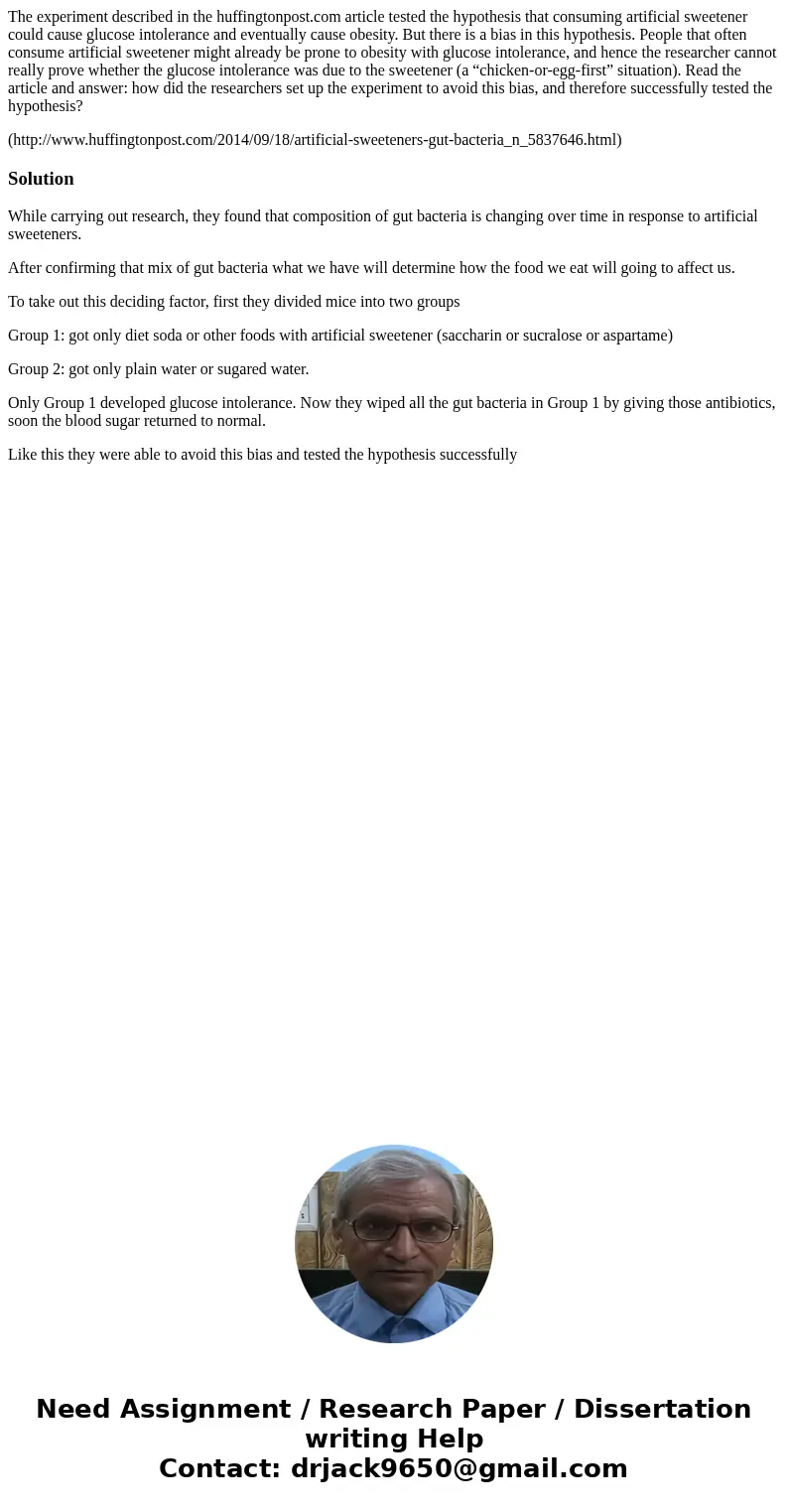The experiment described in the huffingtonpostcom article te
The experiment described in the huffingtonpost.com article tested the hypothesis that consuming artificial sweetener could cause glucose intolerance and eventually cause obesity. But there is a bias in this hypothesis. People that often consume artificial sweetener might already be prone to obesity with glucose intolerance, and hence the researcher cannot really prove whether the glucose intolerance was due to the sweetener (a “chicken-or-egg-first” situation). Read the article and answer: how did the researchers set up the experiment to avoid this bias, and therefore successfully tested the hypothesis?
(http://www.huffingtonpost.com/2014/09/18/artificial-sweeteners-gut-bacteria_n_5837646.html)
Solution
While carrying out research, they found that composition of gut bacteria is changing over time in response to artificial sweeteners.
After confirming that mix of gut bacteria what we have will determine how the food we eat will going to affect us.
To take out this deciding factor, first they divided mice into two groups
Group 1: got only diet soda or other foods with artificial sweetener (saccharin or sucralose or aspartame)
Group 2: got only plain water or sugared water.
Only Group 1 developed glucose intolerance. Now they wiped all the gut bacteria in Group 1 by giving those antibiotics, soon the blood sugar returned to normal.
Like this they were able to avoid this bias and tested the hypothesis successfully

 Homework Sourse
Homework Sourse